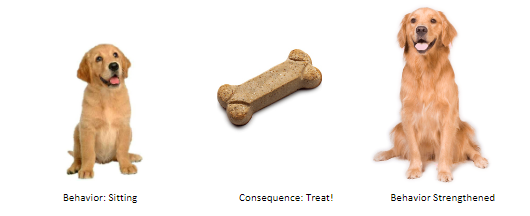Classic & Operant Conditioning | Chapter Five
1/8
Earn XP
Name | Mastery | Learn | Test | Matching | Spaced |
|---|
No study sessions yet.
9 Terms
Learning
A relatively permanent change in behavior due to experience
We learn by association - learning to associate one stimulus with another through repeated exposure to those stimuli

Classical Conditioning
Learning by associating two stimuli and producing a learning (conditioned) response
Observed in the study of Pavlov’s Dog
Ivan Pavlov and His Legacy
Ivan Pavlov illustrated classical conditioning in a lab by training a dog to salivate in response to a bell
Consider Pavlov’s experiment in two parts
Before Conditioning (phase 1)
After Conditioning (phase 2)
Elements Present BEFORE Conditioning Can Occur
Unconditioned Stimulus (US)
a stimulus that elicits an unlearned response
Unconditioned Response (UR)
an unlearned, reflexive response
Neutral Stimulus (NS)
a stimulus that elicits no response at all
Elements Evident AFTER Conditioning
**The neutral stimulus becomes a conditioned stimulus
Conditioned Stimulus (CS)
a previously neutral stimulus that comes to elicit a learned response after being paired with an unconditioned stimulus repeatedly
Conditioned Response (CR)
an acquired or learned response to a conditioned stimulus
Operant Conditioning
Learning by associating behaviors with their resulting events (i.e. the consequences of behavior)
The consequence of a behavior determines whether it’s likely to be repeated
Two Kinds of Operant Conditioning
Reinforcement
a reinforcer is any consequence (stimulus) that strengthen a behavior
Punishment
A punisher is any consequence (stimulus) that weakens behavior
Thorndike’s Law of Effect
The law states that rewarded behavior is likely to occur again
Positive vs. Negative Reinforcement
Positive
Behavior is strengthened by the addition of a stimulus
Specifically, addition of something desirable or pleasant
You exercise more often (reinforced behavior) because you treat yourself to a smoothie afterwards (addition of a smoothie is desirable).
Negative
Behavior is strengthened by the removal of a stimulus
Specifically, the removal of something aversive or unpleasant
You exercise more often (reinforced behavior) because you lose excess weight afterwards (the removal of excess weight—something undesirable)
Positive vs. Negative Punishment
Positive
Behavior is weakened by the addition of a stimulus
Specifically, addition of something aversive or unpleasant
A child whispers more quietly (behavior weakened) because the teacher shhhes them (the addition of shhhh-ing is unpleasant and embarrassing)
Negative
Behavior is weakened by the removal of a stimulus
Specifically, removal of something desirable or pleasant
You exercise less often (behavior weakened) because you missed time with your friends (the removal of fun times with friends weakened your exercise behavior)
Reinforcement Schedules and Their Ratios/Intervals
Continuous Reinforcement Schedule
a system that reinforces a behavior every time it occurs
Results
Rapid Learning, rapid extinction
Partial Reinforcement Schedule
a system that reinforces a response only part of the time
Results
Slower learning, but slower extinction
Fixed Ratio Schedule
system that reinforces a behavior only after a specified number of responses
Variable Ratio Schedule
system that reinforces behavior only after an unpredictable number of responses
Fixed Interval Schedule
system that only reinforces a behavior after a specified time has elapsed
Results
Response pause after each reinforcer
Variable Interval Schedule
system reinforces behavior at unpredictable time intervals
Results
Produces slow, steady responses